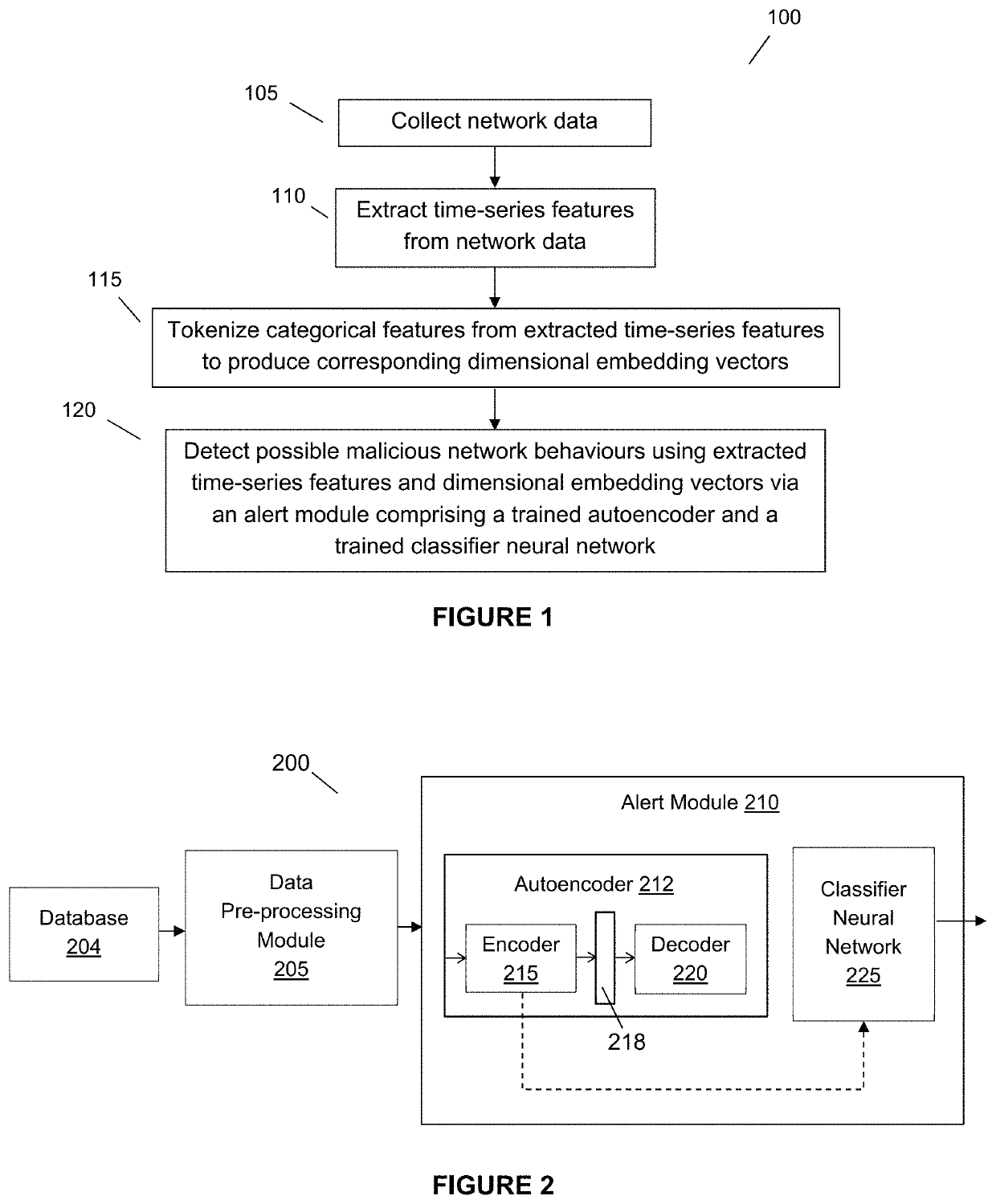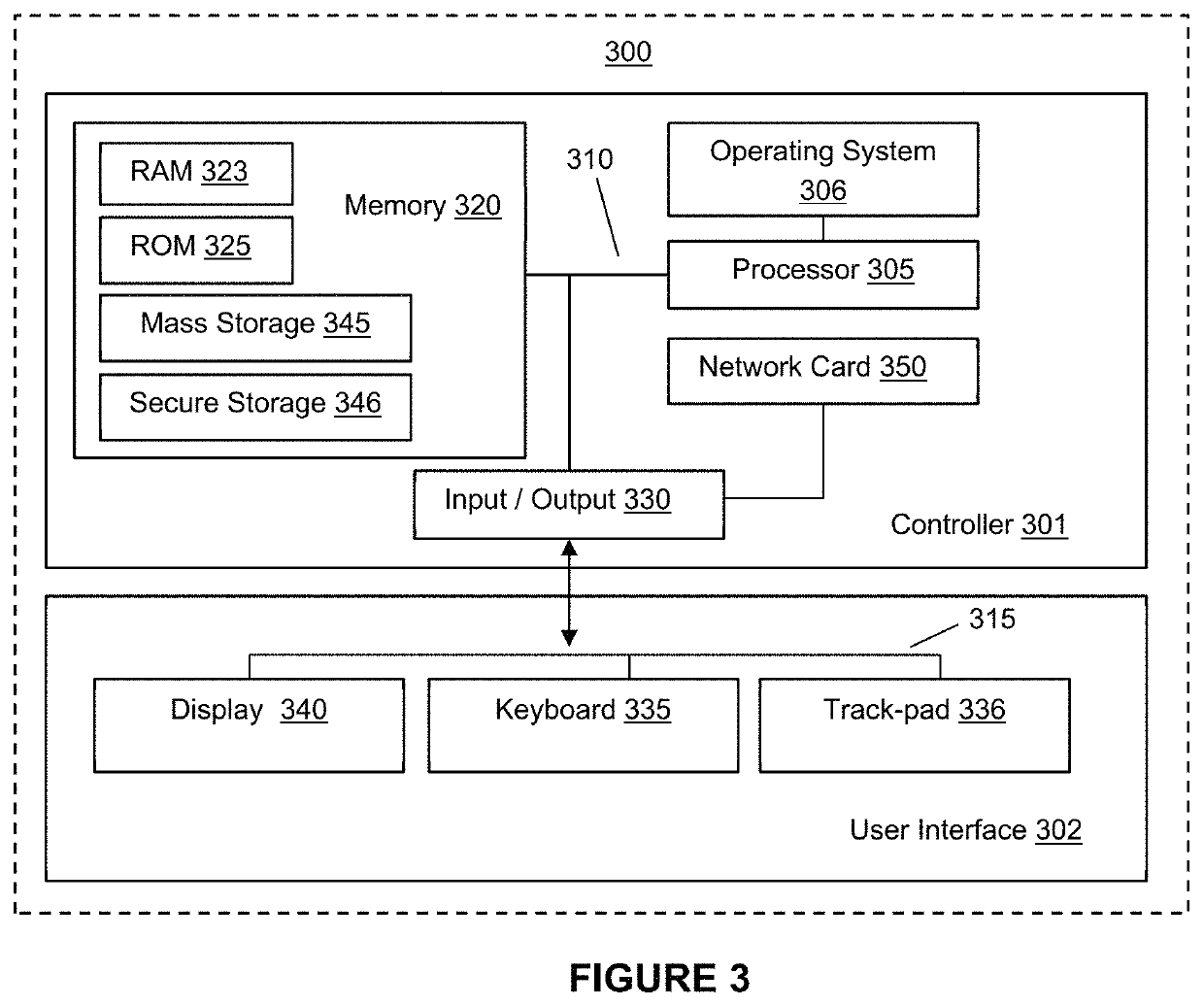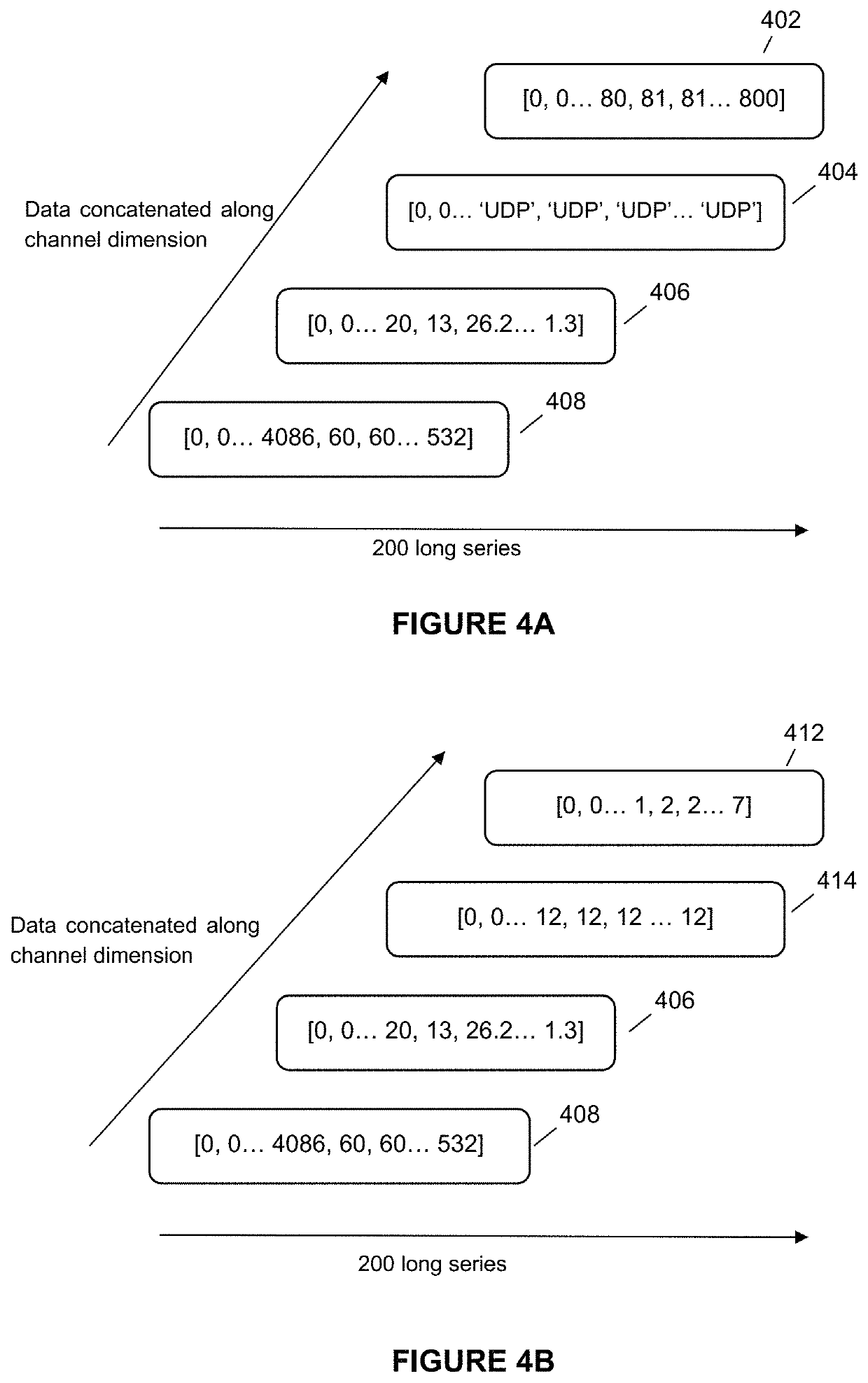Deep embedded self-taught learning system and method for detecting suspicious network behaviours
a learning system and network behaviour technology, applied in the field of system and method for detecting and classifying potential malicious network behaviours or characteristics, can solve the problems of limiting the application of rule-based systems, unusual or uncommon network traffic behaviours, and difficulty in detection of such network anomalies
- Summary
- Abstract
- Description
- Claims
- Application Information
AI Technical Summary
Benefits of technology
Problems solved by technology
Method used
Image
Examples
Embodiment Construction
[0056]This invention relates to a system and method for detecting and classifying potential malicious network behaviour contained within data traffic. In particular, this invention relates to a system comprising a data pre-processing module for processing the received data traffic before the processed data traffic is provided to an alert module that is communicatively connected to an output of the data pre-processing module. The alert module in general comprises two parts. The first part comprises an autoencoder that is trained using a bootstrapping method, and the second part comprises a classifier neural network in combination with the data pre-processing module and encoder (of the trained autoencoder), which are both locked-in / frozen (i.e. fixed weights with no further training) producing fixed deterministic encodings, whereby this combination is initialized using only labelled data and subsequently trained using both labelled and unlabelled data via the self-taught learning trai...
PUM
 Login to View More
Login to View More Abstract
Description
Claims
Application Information
 Login to View More
Login to View More - R&D
- Intellectual Property
- Life Sciences
- Materials
- Tech Scout
- Unparalleled Data Quality
- Higher Quality Content
- 60% Fewer Hallucinations
Browse by: Latest US Patents, China's latest patents, Technical Efficacy Thesaurus, Application Domain, Technology Topic, Popular Technical Reports.
© 2025 PatSnap. All rights reserved.Legal|Privacy policy|Modern Slavery Act Transparency Statement|Sitemap|About US| Contact US: help@patsnap.com



